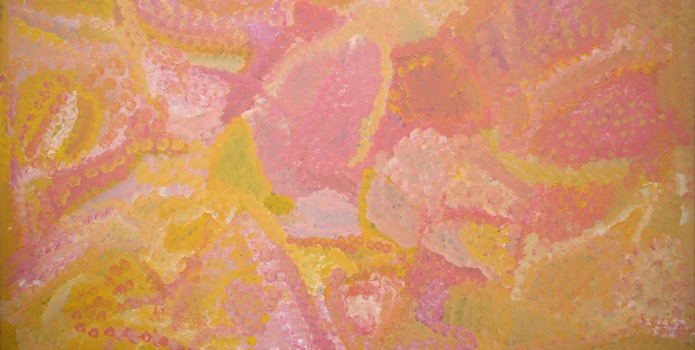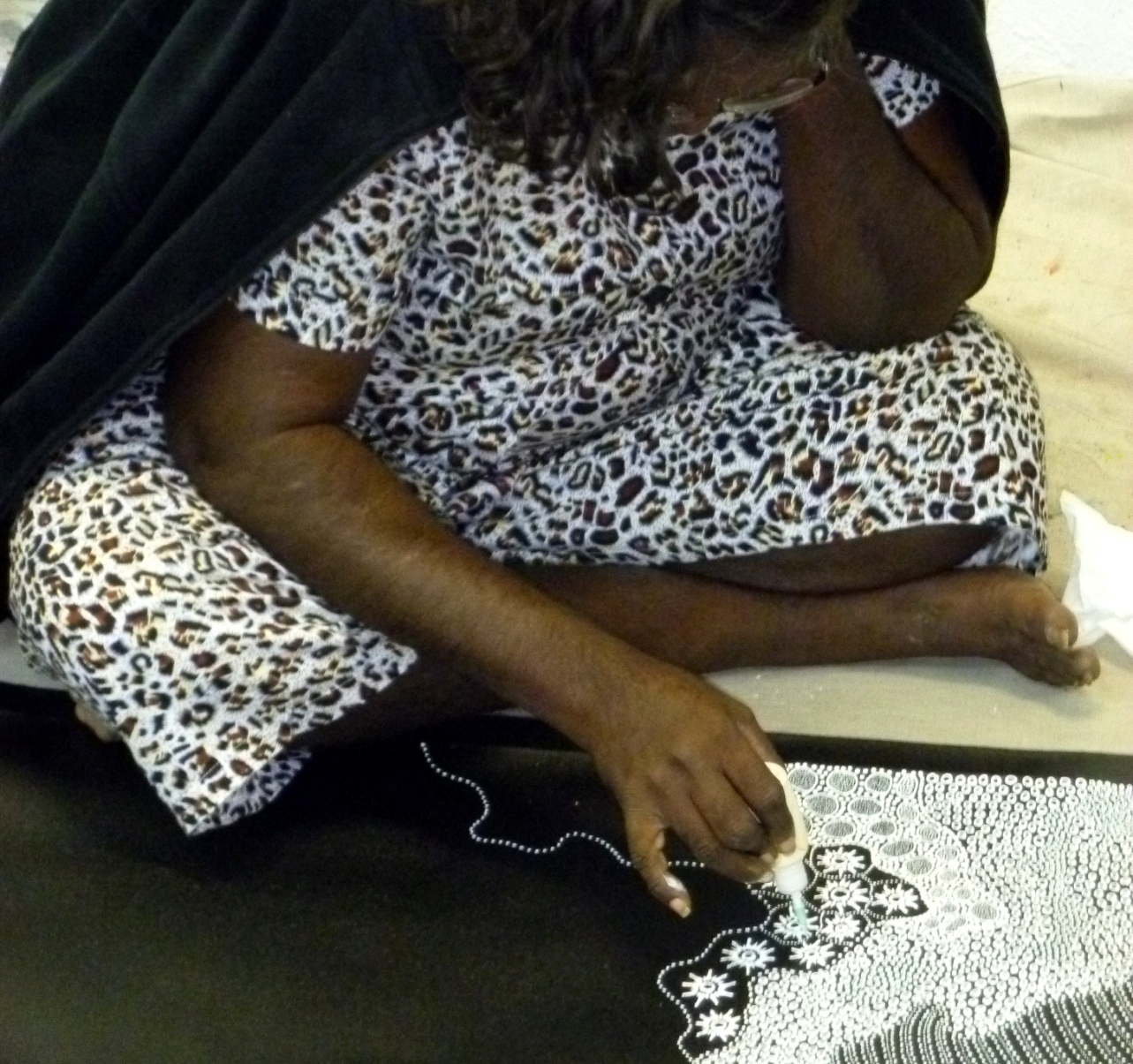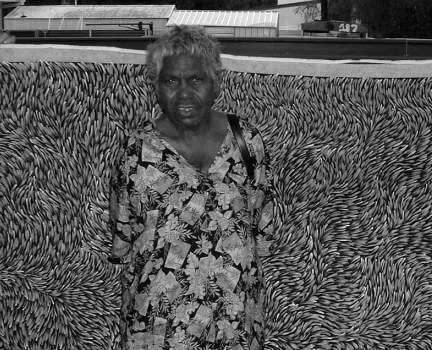The Emily Kngwarreye Phenomenon
Article last updated: Feb, 2018
Emily Kame Kngwarreye (1919-1996) was a phenomenon in the world of modern Australian art.
Starting to paint when she was nearly 70, it is estimated that in a stellar career that lasted 8 years, Emily may have painted as many as 5,000 paintings. In just the years from 1990 to 1993, Emily’s works were shown in no less than 48 group exhibitions.
Emily Kngwarreye had an established reputation at the end of her life, having produced works of outstanding energy and vibrancy. By distilling her imagery in the latter years of her life, deconstructing the Yam Dreaming and the associated women’s ceremony for which she was custodian, she produced works that were highly abstracted and individual.
Her work started out like many other well known Utopia artists, with layers of story created over the top of earlier layers. It was a technique that the Utopia artists perfected as they worked on batik designs that was their specialised art form starting in 1977 and continuing through the 1980s.
In batik work the layers of dyed colour are added to the fabric, moving from the lightest to darkest colour. Emily’s early paintings had the linear drawing, often of her totemic Yam design underneath, then a veil of dots rained over the top of that, creating the seed and flower imagery on the surface.
In later years Emily Kngwarreye started deconstructing her paintings, selecting various layers of the design and creating her paintings using the constraints of only one layer of meaning. Images of Awelye Body Paint and Yam Root became minimal linear works, at their simplest painted only in black and white. Some of these later paintings attained monumental scale with canvases of three metres and larger.
Emily achieved popular appeal from the beginning of her career – her paintings stood out as confident and definitive statements by a woman artist, at a time when women Aboriginal artists were emerging from behind the shadow of the male artists.
Recently published figures that look at the success of female artists of the past 40 years at Australian auction sales (1), reveal that Emily Kngwarreye is the leading female artist by sales volume. Her sales of $22.08 million are nearly twice the sales level of the next nearest female artist, Margaret Olley, who achieved $11.2 million.
During that time from 1973 to 2013, sales by women artists as a percentage of the total auction sales have risen from 2% in 1973 to 14% in 2013. But by 2013 Aboriginal women artists represented $3.3 million of auction sales, or 24% of the total sales of $13.7 million of women's art sold at auction in 2013.
Emily Kngwarreye’s work was also the first by any Australian woman artist to go through the $1 million mark, achieving that figure in 2007 for the work called ‘Earth’s Creation’. For her originality of expression, her individualism and her energy, Emily Kngwarreye has achieved the rare distinction of being a popular arts heroine within her lifetime as well as an enigmatic Aboriginal art success from a relatively short career.
Emily Kngwarreye’s contribution has made possible the continuing success of new generations of Utopia women artists, who can draw on the important aspects of their traditional culture as a source for artistic inspiration. These artists include Gloria Petyarre, Abie Loy Kemarre, Kathleen Petyarre, Anna Petyarre, Minnie Pwerle and many other emerging Utopia artists.
(1) Reference: Australian Art Sales Digest, Terry Ingram, 13-Jul-2014
Read more:
- Japingka Gallery: Private Eye Exhibition July 2014
- Sydney Morning Herald: Monet talks, and so does this abstract genius
- Art Gallery of NSW: Emily Kam Kngwarreye
- National Museum of Australia: Utopia - The Genius of Emily Kame Kngwarreye
- Emily Kame Kngwarreye: Alhalkere, Paintings from Utopia (National Gallery of Australia)
- Japingka Gallery: Artists of the Utopia Region






